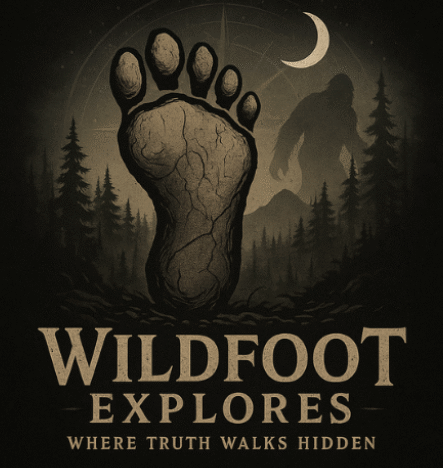
The Yeti, also known as the Abominable Snowman, often stirs up a whirlwind of curiosity and imagination. Unlike its cryptid cousin, Bigfoot, which is said to lurk in forests around the world, the Yeti is firmly rooted in the legendary snows of the Himalayan mountains. Boy, if those mountains could talk, the tales they might tell!
These towering peaks spread across Tibet, Nepal, and Bhutan are home to age-old stories of a mysterious creature said to roam the high-altitude expanses. Descriptions from eyewitnesses and local lore paint a picture of a large, ape-like being, covered in thick white or reddish-brown fur, built to withstand the harsh, cold climate. The stories remain tantalizingly consistent, right down to the creature’s uncanny ability to slip through the fingers of modern discovery.
Now, let me take you right into why the Himalayas serve as such an intriguing possible habitat. It’s remote. It’s wild. Imagine endless expanses where people rarely tread, and you’ve got a hide-and-seek paradise for cryptids. With each expedition into these remote regions, adventurers bring back tales—and sometimes strange tracks or unexplained noises—but solid proof remains as elusive as ever.
- Gigantopithecus: The Ancestor of the Yeti?
- Scientific Investigations into the Yeti’s Existence
- Gear Up Like a Real Cryptid Hunter
- The Hypothesis: Could Gigantopithecus Still Walk Among Us?
- Implications of Discovering the Yeti
- Conclusion: Unraveling the Yeti Mystery
- Ready to Explore More?
- 🔥 Dive deeper. Get inspired. Let your curiosity roam free. The unknown is just a page away.
By understanding the Yeti’s connection to these incredible landscapes, we delve into more than just stories. We explore the possibility of undiscovered life forms hiding in one of the world’s few remaining unexplored frontiers. So, as we journey through the idea that the Yeti might be a surviving Gigantopithecus, keep an open mind and let the questions guide you.
Gigantopithecus: The Ancestor of the Yeti?

Say hello to Gigantopithecus—a colossal creature that once roamed the lands of Asia millions of years ago. This ancient ape, believed to be the largest that ever lived, sparks endless curiosity when we think about cryptids like the Yeti. These hefty ancestors of today’s primates thrived in Asia, leaving fossils that offer a tantalizing clue into a possible connection with the tales of the Yeti roaming the Tibetan wilderness.
Now, why the big buzz around Gigantopithecus when we talk about the Yeti? It turns out that these fossils were discovered near regions where Yeti sightings are reported. Coincidence? Maybe. But it sets the stage for some fascinating scientific theories. If these massive apes adapted over time to survive colder climates, it could explain why some reports describe Yeti as being covered in thick, sometimes white, fur—perfect for blending into snowy backdrops and keeping warm up in the mountains.
Some researchers are intrigued by the possibilities here. They hypothesize that Gigantopithecus, if it somehow evaded extinction, might have gone through evolutionary changes. Imagine natural selection working its magic, favoring those with longer, furrier coats, and voila—you’ve got the image that matches the Yeti folklore.
If the idea of ancient apes adapting into modern-day cryptids fascinates you, you might enjoy Wildfoot’s Beginner’s Guide to Sasquatch Hunting, where I dive into the myths, signs, and gear behind the hunt for Bigfoot—and what it might teach us about the Yeti too.
The beauty of science is in asking the ‘what ifs’ and exploring those wild theories. It all comes down to how these hairy legends might have evolved if Gigantopithecus survived past its supposed extinction about 100,000 years ago. As you mull over these ideas, just think about the endless possibilities lurking in the uncharted territories of the Himalayas—and keep the curiosity engine revving!
Scientific Investigations into the Yeti’s Existence

Science has been hot on the Yeti trail, attempting to unravel this mystery wrapped in thick fur and legend. Back in 2014, researchers got their hands on some hair samples attributed to the Yeti. Exciting, right? Well, the plot thickened when genetic analysis revealed DNA surprisingly similar to an ancient bear species rather than any known primate. Talk about monkey business gone awry!
But here’s the kicker—science is never one to call it quits. The analysis didn’t eliminate the possibility of an unknown primate lurking in those icy peaks. Instead, it added fuel to the fire for debates about what might truly be hidden out there. Maybe, just maybe, science hasn’t yet caught up with what locals have been whispering about for generations.
The technology guiding these explorations is evolving, too. Advanced DNA sequencing techniques and better research equipment mean we’re getting closer day by day. Just imagine—there’s a whole new realm of possibilities opened by modern tech, and it’s making even the most skeptical scientists stop and wonder.
I’ve explored similar questions in Paranormal Curiosities: Realm Uncovered, which looks into ghost hunting, unexplained events, and the equipment that helps us seek the unknown. Whether you’re chasing spirits or snowmen, the tools—and the mindset—aren’t all that different.
Yet, while technology is aiding discovery, there’s always room for doubt and skepticism. It’s healthy. It drives us to check, re-check, and dig even deeper. As we stand now, the Yeti remains one part science, one part legend, and a whole lot of mystery. As an explorer of facts and folklore alike, keep your mind wide open to what might be revealed next in this fascinating journey.
Gear Up Like a Real Cryptid Hunter
Ready to explore the unknown? Whether you’re planning your own expedition or just love cryptid culture, here are a few adventure-tested picks you’ll love:
- 🔍 Night Vision Monocular – Perfect for late-night Yeti watching or Bigfoot scouting trips. See what’s out there when the sun goes down. (Amazon Affiliate Product)
- 📘 Bigfoot & Yeti Field Journal – Log your findings, track strange prints, or write your own cryptid encounters. An essential for serious seekers. (Amazon Affiliate Product)
- 🎒 Tactical Outdoor Survival Kit – Compact, durable, and filled with tools you’d need if you stumbled upon a real Yeti in the Himalayas. (Amazon Affiliate Product
The Hypothesis: Could Gigantopithecus Still Walk Among Us?

Picture this: creatures long thought extinct, suddenly discovered alive and thriving. We’ve seen it happen, like with the Coelacanth, a fish thought extinct for millions of years until it turned up in 1938. So, why can’t the same be true for Gigantopithecus, this ancient ape that might just be dodging us in the dense, unexplored corners of Earth?
Here’s a wild theory that keeps hitting the cryptid boards: Could some populations of Gigantopithecus have packed their bags and embarked on a migration tale of epic proportions? Imagine them spreading across continents, some braving the icy terrains of what is now the Himalayas. Over time, these would become the elusive Yeti, while others that made their way across the Bering land bridge might have evolved into what we call Bigfoot in North America.
Intriguing, right? It paints a picture of survival and adaptation across diverse environments. These mysterious beings could have become masters of stealth, avoiding human detection much like today’s great apes do in their natural habitats. The vast wilderness of the Himalayas provides the perfect cover for them, staying hidden yet very much alive.
It’s a thrilling thought. We often believe that if something significant was out there, we’d have found it by now. Yet, the vastness and isolation of some regions mean that discovery isn’t always as straightforward as it seems. Historical instances show science can stand corrected when it comes to declaring something extinct. This keeps the hope alive that one day, Gigantopithecus might step out of myth and into reality. As you dwell on this hypothesis, consider how little we truly know about the wild corners of our world—and the surprises they might still hold.
Implications of Discovering the Yeti

Imagine what finding the Yeti would mean—not just for cryptozoology, but for science, culture, and even our understanding of evolution. The ripple effects of such a discovery could be monumental. We’d be rewriting textbooks and reshaping theories that have been set in stone for decades.
For starters, scientists would launch an onslaught of research, diving into how this creature survived undetected for so long. The Yeti could offer invaluable insights into adaptation and survival in extreme climates. Plus, its discovery could spark fresh interest and funding for more than just cryptozoological expeditions. This could ignite a new era of biological exploration across those untouched corners of the globe.
Imagine the cultural impact, especially for communities where the Yeti is more than myth. It’s part of their identity, woven into their stories and traditions. Discovering a living Yeti could validate historical legends and folklore that often get dismissed as mere tall tales.
Amidst the excitement, there’d be challenging questions. What are the ethical considerations of exposing this creature to the modern world? Should it be studied in the wild, or preserved from human interference? The balance between scientific advancement and species protection would need careful attention.
Protection of potential habitats would also become crucial. Finding the Yeti’s stomping grounds could lead to conservation efforts aiming to preserve not just the creature, but the ecosystem that sustains it. As you ponder these possibilities, remember that the journey of discovery doesn’t just answer questions—it raises new ones, inviting us all to be part of unfolding the mysteries around us.
Conclusion: Unraveling the Yeti Mystery
So, here we are, staring into the icy mists of the Himalayas and the blurred lines between science and legend. The Yeti, with its curious ties to Gigantopithecus, challenges what we think we know about our world. It represents the endless possibilities that lie beyond the sphere of our understanding.
While skeptics might argue for concrete proof—fossils, DNA, or a clear photo—history shows us many species have evaded detection far beyond expectations. The path of discovery is often paved with doubts, only to be unveiled through relentless curiosity and exploration.
From legends to possible truths, my journey through the unknown has taken me across ghost trails, Sasquatch sightings, and the whispers of shadowy beings. In The Long Road to the Unknown: One Man’s Journey, I share personal stories that reflect this path—and what it means to explore fearlessly, even when answers aren’t guaranteed.
For those of us captivated by cryptids, the mystery isn’t merely about proving existence. It’s about preserving the allure and wonder of the unknown. Each unanswered question keeps the spirit of discovery alive, urging us to explore those high-altitude avenues, ready for new happenings and findings.
As science advances, we either inch closer to solving the riddle or deepen its enigma, examining hundreds of strands in the web of possibility the Yeti presents. Embrace these mysterious entities, and who knows—your next adventure might just bring you one step closer to the answer.
Ready to Explore More?
If topics like Could the Yeti be real in the Himalayas, Is Gigantopithecus the true origin of Bigfoot, or scientific evidence of cryptids and ancient apes excite your imagination, you’re in the right place.
Check out my full collection of books on my Amazon author page. From Bigfoot psychology in Exploring the Mind, to ghostly investigations in Paranormal Curiosities, and hands-on cryptid hunting in Wildfoot’s Beginner’s Guide, each title opens a new door into the unexplained.
🔥 Dive deeper. Get inspired. Let your curiosity roam free. The unknown is just a page away.


Whoa, this got me thinking! I’ve always been intrigued by the Yeti legends, but linking them to a surviving Gigantopithecus really takes it up a notch. It’s fascinating to imagine a creature like that roaming the Himalayan region, especially when there’s been so little hard evidence. I love how you pulled in scientific speculation along with the cultural stories, it really paints a fuller picture. Whether it’s myth, legend, or something else entirely, it’s an exciting idea to ponder. Thanks for sparking my imagination!
Thanks so much, Randi! I’m really glad the post got you thinking—that’s exactly what I hoped it would do. The Yeti has always fascinated me too, and when you start connecting the dots between ancient legends and possible scientific explanations like Gigantopithecus, it opens up a whole new world of wonder. There’s something magical about blending fact with folklore, especially in places as mysterious as the Himalayas. Appreciate your kind words and curiosity—stay wild and keep exploring the unknown!
Fascinating article! The idea of the Yeti being a surviving Gigantopithecus really sparks the imagination. I appreciated how you connected the known history of Gigantopithecus with the legends and sightings from the Himalayan region. It’s intriguing to think that remnants of ancient species might still exist in such remote areas.
Do you think modern technology, like drones or environmental DNA sampling, could help provide more concrete evidence in the near future? Also, are there any credible expedition reports or findings that you think deserve more attention from the scientific community?
Thanks for diving into such an exciting topic!
Thank you so much, Laura! I really appreciate your thoughtful comment. It is fascinating to imagine that remnants of ancient species like Gigantopithecus could still be hidden away in the world’s most remote regions.
Great questions, too! I absolutely believe modern tools like drones, thermal imaging, and especially environmental DNA (eDNA) sampling could be game-changers in the search for elusive creatures like the Yeti. These technologies allow us to scan vast, hard-to-reach areas and even detect genetic traces in soil, water, or snow—without ever seeing the creature directly.
As for expeditions, there are a few that I think deserve more attention—some led by seasoned mountaineers and researchers who’ve reported unusual tracks, hair samples, or encounters that couldn’t be easily explained. I might dive into a few of those in a future post!
In the meantime, if you’re curious about the kind of gear real researchers and enthusiasts use out in the field, I’ve put together a list of my top picks here:
https://wildfootmyths.com/my-top-picks-for-tracking-and-survival-gear/
Thanks again for your curiosity and support—here’s to exploring the mysteries together!
This was such an engaging read! The connection between Gigantopithecus and the Yeti is fascinating, especially considering how little we truly know about the uncharted regions of the Himalayas. History has shown us that species once thought extinct can sometimes reappear, so it’s intriguing to wonder if something like this could still be hiding in the wild.
One thing I kept thinking about while reading—if Gigantopithecus did survive and adapt, how might its diet have changed to suit a colder, mountainous environment? Also, given the advancements in DNA sequencing, do you think future expeditions might finally uncover definitive proof of the Yeti’s existence? I’d love to hear your thoughts!
Looking forward to reading more of your cryptid explorations!
That’s a great question about Gigantopithecus adapting to colder, mountainous environments. It likely would have had to shift from a primarily fruit-based diet to include roots, bark, hardy mountain vegetation, and possibly even scavenging. If it did survive, adaptation would’ve been key.
And yes—DNA sequencing is advancing so rapidly, especially with environmental DNA (eDNA) sampling. I truly believe that future expeditions combining tech with traditional tracking might bring us closer than ever to uncovering some real answers about the Yeti.
Thanks again for reading, and I can’t wait to share more cryptid explorations with you soon! Stay curious out there!
Hi, what an intriguing story. It is an incredible possibility that there is a huge ape, descended from Gigantopithecus living, undetected by modern mankind in the Himalayas. When you say Gigantopithecus is supposed to have gone extinct about 100,000 years ago, that is effectively barely yesterday in evolutionary terms. Homo sapiens is thought to have emerged in Africa around 300,000 years ago. So here is a question. Is it reasonable to assume that homo sapiens would have already migrated north from Africa to the foothills of the Himalayas by 100,000 years ago and could homo sapiens have been around and occupying the same geographical areas when Gigantopithecus was also known to have been alive?
Thanks
Andy
Hi Andy! Thanks for the kind words and for dropping such a thought-provoking comment! You’re absolutely right—100,000 years ago is truly a blink of an eye in evolutionary terms. It’s fascinating to think how recently Gigantopithecus may have walked the Earth.
To your question—yes, it’s very possible that early Homo sapiens were already making their way into Asia by that time. Most models suggest Homo sapiens began migrating out of Africa around 70,000–100,000 years ago, though there’s growing evidence pushing those dates even earlier in some areas. So there could very well have been overlap, especially in southern Asia where Gigantopithecus fossils have been found.
That raises some wild possibilities—did early humans encounter them? Were stories of such encounters passed down in oral traditions and eventually become part of Yeti folklore? It’s an exciting area of study with so many unknowns.
Thanks again for the great insight, Andy—I hope to explore more of these deep-time questions in future blogs!
Fascinating read! I’ve always been intrigued by the Yeti legend, and the idea of it being a surviving Gigantopithecus really adds a whole new layer to the mystery. I like how you connect the scientific theories with cultural accounts—it makes the possibility feel less far-fetched and more worth exploring. The Himalayan angle especially caught my attention… those remote, unexplored regions leave so much room for speculation. Do you think we’ll ever find definitive evidence, or is the Yeti destined to stay in the realm of legend? Either way, this article got me thinking—great job!
Hi Bob! I really appreciate your kind words—thanks for taking the time to read and share your thoughts! The Yeti legend has captivated so many of us for generations, and connecting it to something like Gigantopithecus really does make the mystery feel a bit more grounded in reality, doesn’t it?
The Himalayas are truly one of the last great frontiers, and their isolation leaves plenty of room for the unknown. As for definitive evidence… I think we’re closer than ever with modern tech like drone surveillance and environmental DNA analysis, but part of me wonders if the Yeti will always stay just out of reach—half legend, half reality. Maybe that’s what keeps the magic alive.
Glad the article sparked some thoughts—that’s what it’s all about! More cryptid deep dives coming soon!
Hi! Shawn,
You just activated my imagination about legends and cryptids. It brought me back on my childhood days.Thanks I found your article but I am curious what’s the difference between cryptids, legends and myths? You mentioned, that Gigantopithecus are ancestors of the Yeti also known as the Abominable Snowman. Unlike its cryptid cousin, Bigfoot, that lurk in forests. This lead me to imagine of their same characteristics of being big but believed to be in different places, Yeti in snows of the Himalayan mountains and Bigfoot in forests. Interesting for me! Also, I checked the Tactical Outdoor Survival Kit, the tools are amazing which you’d need if you stumbled upon a real Yeti in the Himalayas. They are survival tools, tell me, will I think that the cryptics are wild and dangerous that needed to be cautios ? I enjoyed reading your article and thanks I had learned about cryptids like the Yeti. All the best!
Shierly
Hi Shierly! Your comment truly made my day—thank you! I love that the article brought back childhood memories and sparked your imagination—that’s exactly what I hoped it would do
Great question about the difference between cryptids, legends, and myths:
• Cryptids are creatures whose existence is debated but not scientifically proven, like the Yeti or Bigfoot.
• Legends are traditional stories rooted in history, often passed down through generations and sometimes based on real people or events.
• Myths are symbolic stories that explain natural or cultural phenomena, often involving gods, supernatural beings, or moral lessons.
You’re absolutely right—the Yeti and Bigfoot are like distant cousins, both described as large, elusive, and mysterious, just living in very different environments. And yes, that Tactical Outdoor Survival Kit would definitely come in handy if you ever wandered into Yeti territory—just in case!
As for whether cryptids are dangerous—that’s part of the mystery! Some legends paint them as shy and elusive, others as territorial or protective. It’s always wise to be cautious in the wild, whether you believe in cryptids or not.
I’m so glad you enjoyed the read, and I hope you keep exploring these fascinating mysteries with me. All the best to you too!